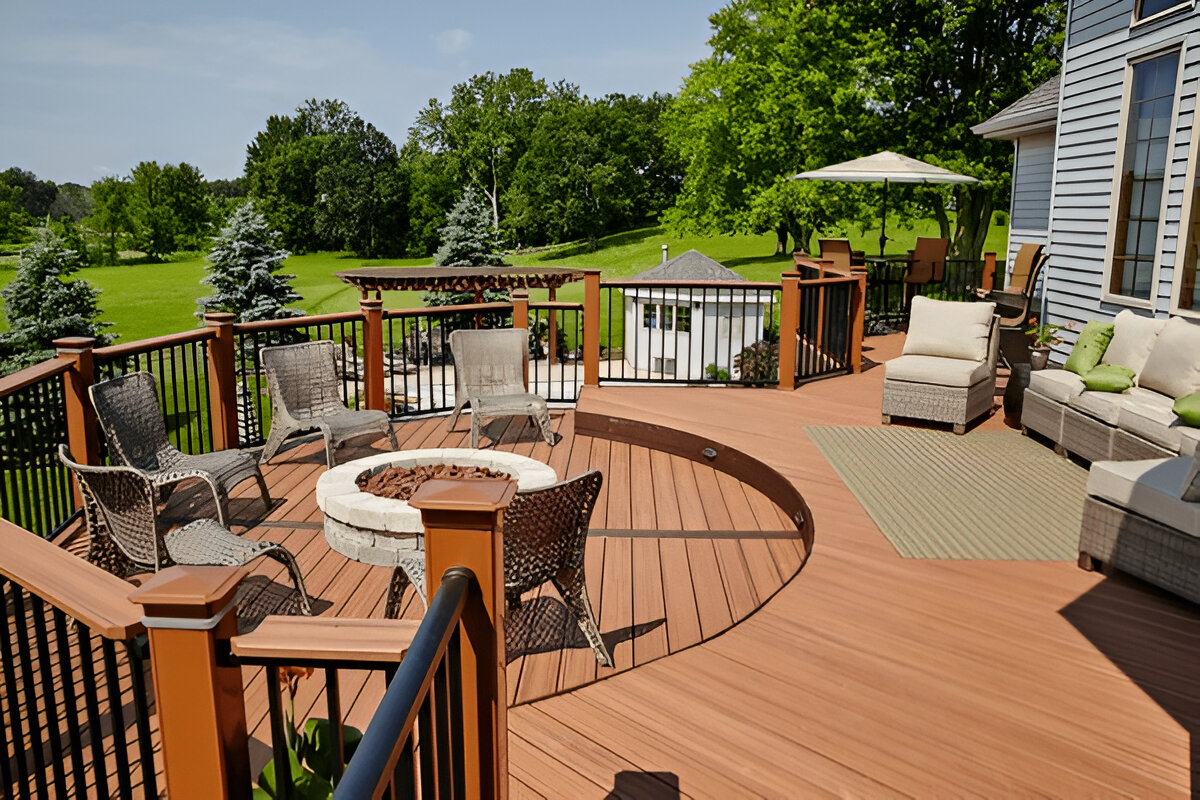When you’re an avid DIY enthusiast, in your head, you think you can do anything.
You watch a video, you get the gist of what is happening, and you have enough skills to carry out most tasks. This is admirable, of course, but it is also a trait of the wise DIYer to know when they should NOT attempt to replicate what the professional in that video was doing.
For example, that time you built an entire deck because it seemed easy enough to do, and then a couple of days later it started falling apart (but thankfully, no one got hurt).
Yeah, you definitely should DIY just about anything.
So, below we’ll leave you with three examples of what you should tackle yourself and three you should call the pros for.
Let’s dive in!
You Can Do It Yourself
There are always things that a pro will do so expertly that it might scare you into thinking it can’t be done unless you’ve got 10 years of experience behind your back.
Well, while that IS true, you can still do a pretty good job with zero experience. And the best part about it is – the next time you do one of these things, your experience level will no longer be zero, which means you’ll do an even better job!
Painting
This is one of the best go-to DIY projects around:
- Low-cost tools needed ( use high-quality brushes and rollers, though for an elevated look)
- You can do the prep work yourself ( mudding, sanding, and taping).
- You can get a professional-looking finish when you take your time.
Even a beginner can get a great-looking paint job if they take their time with the prep and do two coats.
Installing Smart Devices
These projects look scary because they’re very complicated at the surface level.
But the thing is – the internet exists.
There are so many step-by-step guides on how to install just about anything. And once you do it once or twice, you’ll come to realize that it isn’t all that scary AT ALL. On the contrary, it can be fun to do.
Make sure you read the instructions, and you should be fine:
- Modern devices like video doorbells, smart bulbs, and smart climate control for your home are pretty straightforward and mostly plug-and-play technology.
- Make sure you turn off the power if you need to do any wiring.
- Use the manufacturer’s step-by-step guides and diagrams for samples of how things should look.
The depth of the smart home system you want will be entirely up to your preference, so bear that in mind when you are doing this yourself. Most requests should be easily programmed into the operating systems, but if you need assistance, call the help line, and they can walk you through any complexities.
The Garden
A VERY fulfilling (and relaxing) DIY activity:
- If you are handy with woodworking and can mold a sauna out of pallets, this will be where you can be in your element.
- Head to thrift stores to check out anything that can be reused, renewed, or recycled.
- Garage sales can be full of bargains. You know what they say, ‘One man’s junk is the other man’s treasure.’
- Find reclaimed wood for planters or quality little decks or special nooks for meditation and yoga.
- Fill the garden with fragrant flowers, beautiful greenery, and colorful plants. Create zones for the pollinators, a lavish herb garden is pleasing to the eye, the nose, and not to mention the taste buds when you are whipping up some delicious dish, everyone will rave over.
No real skills necessary, you can make it as simple or as complicated as you like. Just bring creativity and think of uniqueness, tranquility, and inspiration.
Handing It Over To The Pros
Knowing your limits is the gold for the DIY star.
Remain wise in your decisions and don’t tackle these things yourself…at least not THIS time:
Any Structural Modification
For example, you don’t want to do anything with any load-bearing walls & beams; basically, don’t go near anything that will be the determining factor of an entire structure possibly falling flat because of a gust of wind.
Here are a couple of situations:
- Structural changes or issues that arise should be taken care of with the advice or services of an expert.
- A sagging ceiling, cracked walls, and gaps between the floor and walls need an engineer’s attention. If these things are not handled correctly, it could be a catastrophe for your project. You may be susceptible to fines for not having the correct permits, an unsafe structure, or, in the worst-case scenario, your upstairs could fall into your downstairs!
This is why you need a Pro.
In your enthusiasm as the great DIYer, you may make a mistake that will compromise the integrity of your home (removal of a support beam or load-bearing wall, for instance). When a project requires an engineer, planning permission, and complex building strategies, you’re going to need a company that specializes in this kind of expertise.
If you’re building a deck or a porch (screened-in or three-season), a local company like Fortress Construction that specializes in such structures can ensure your vision can become a reality safely, up to the highest standards, and up to code. Otherwise, you’re risking that the entire structure will at one point fall apart/collapse and possibly injure someone.
Major Electrical or Plumbing Overhauls
Both electricity and plumbing are big no-nos.
Unless you’re certified, it’s best not to go near it. Sure, you might switch that light bulb here and there, but we’re talking about installations or entire systems.
They are a safety hazard waiting to happen, and there’s so much that can go wrong. Even if you THINK you’ve done a great job, a few months later you find out that the foundation is leaking and you need to tear everything up and call a professional plumber. Double the cost, double the headache.
And it could even be dangerous! Imagine a fire starting in the middle of the night because you’ve put one too many devices to charge overnight, simply because you’ve done something wrong with the wiring.
- You will need an inspector to quantify any plumbing or electrical work, so here is another place where you should hire a professional. There are major hazards associated with plumbing and electrical systems, so a certified specialist in these areas is a must.
- It will be important to vet any hires to ensure they are fully licensed, and you should talk to their past clients to see what the quality of their work was like and what kind of service they provided.
Roofing
Roofing requires so much skill to be done right. The roof survived 2-3 storms, so it seems solid. And then it starts leaking in the next rain.
What happened?! How. The house is cold because you haven’t insulated it properly. Its structure isn’t solid (check the first DIY no-no for more info on that). And if you work on the roof, there are so many things that could go wrong – you falling off the roof is just one unattractive thing that could happen.
- Another place you should be hiring a professional. Looking for a soft spot under the roof tiles or fixing broken and ripped shingles could be dangerous work. The height and pitch of the roof might require some special safety equipment.
- A pro would also know what materials would be best and guarantee their work for a number of years.
Conclusion
A successful DIY project is one you can be proud of. What made it successful was your project management.
You knew when it was necessary to call in the experts when a major issue arose. These experts came in with their education and knowledge and sorted it out quickly and professionally. The added bonus is that you can have someone local (which means close) and they can dash over and fix anything that might crop up in the coming weeks.
Their local knowledge of materials, climate, and building laws and permits gives them an advantage.

